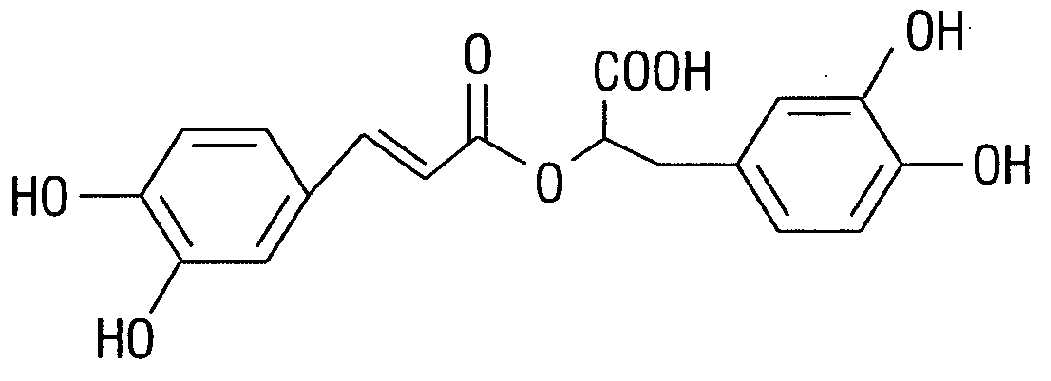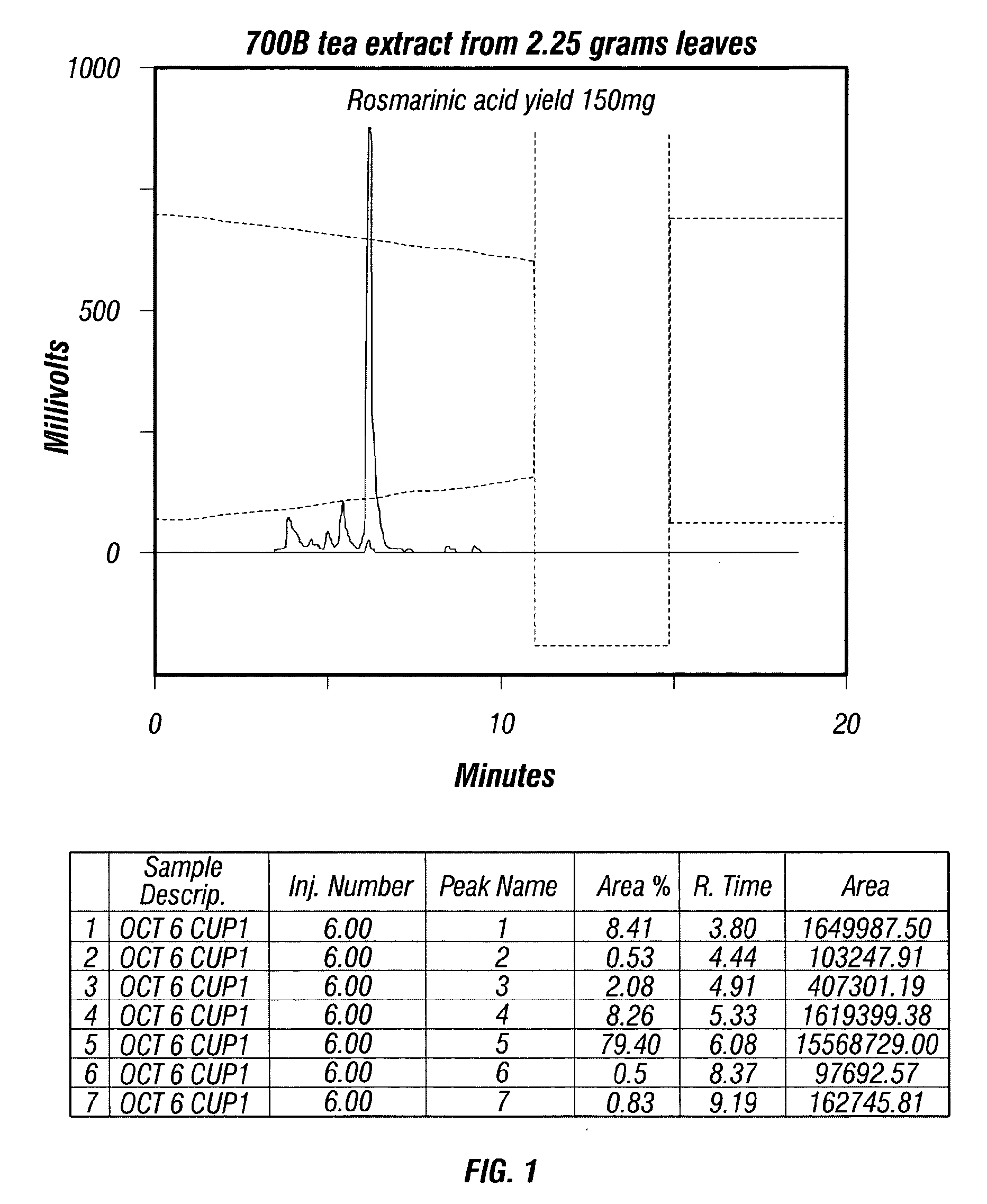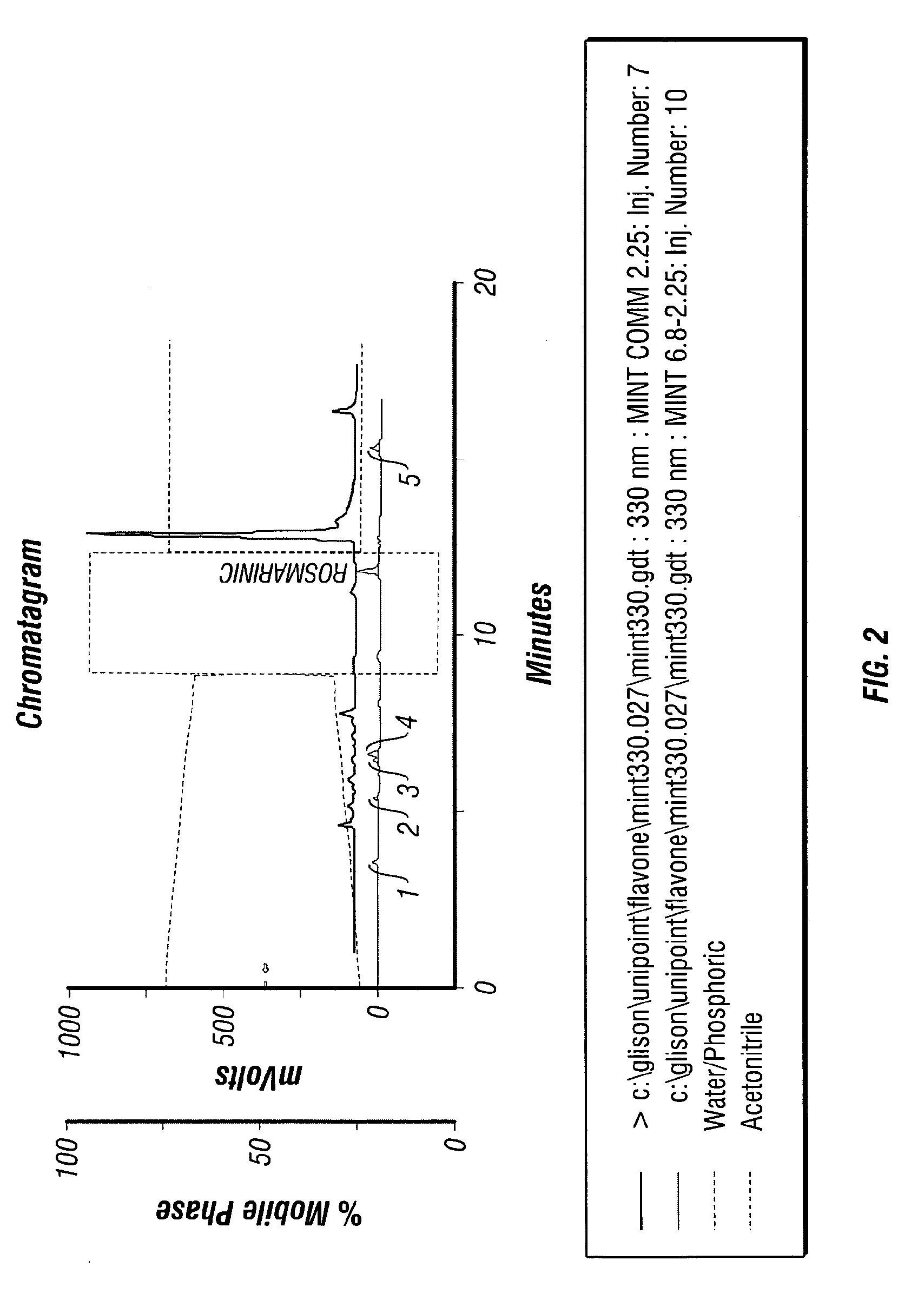Production of Rosmarinic Acid from Spearmint and uses Thereof
a technology of rosmarinic acid and spearmint, which is applied in the field of production of rosmarinic acid from spearmint, to achieve the effect of improving memory
- Summary
- Abstract
- Description
- Claims
- Application Information
AI Technical Summary
Benefits of technology
Problems solved by technology
Method used
Image
Examples
example 1
Selection of Spearmint Lines with Enhanced Rosmarinic Acid
[0070]The screening protocol was performed by screening spearmint seeds (Mentha spicata; Lot 157, Stokes Seeds Ltd., St. Catharines, ON, Canada; country of origin: The Netherlands) in a solution of phenylalanine analogue, L-α-bromophenylalanine, a putative inhibitor of phenylalanine ammonia lyase, the first enzyme in the phenylpropanoid pathway. Alternatively, seeds may be germinated and plants grown in the presence of rosmarinic acid itself (e.g. about 0.4-1 mM) to identify plants that display enhanced levels of rosmarinic acid.
[0071]Spearmint seeds (5 g, or about 50,000 seeds) were surface sterilized for 10 minutes in a solution of 100% bleach, then washed three times with sterile water. The seeds were then placed on pre-wetted sterile filter paper soaked in a solution of 0.7 mM L-α-bromophenylalanine in Petri dishes. Plates were transferred to a 30° C. chamber for germination, and when emergence occurred, plates were trans...
example 2
HPLC Testing of Spearmint Ethanol / Water Extracts for Rosmarinic Add Content
[0075]Rosmarinic acid was identified and quantitated using a RP-HPLC method. Briefly, between 5 to 10 mg of ground leaf material (particle size 500 um or less) from indoor grown plant clones was placed in a test tube with 3 mL of 50% ethanol solution and microwaved for 120 seconds (2×60 seconds, 1400 watts). The solution superheats during microwaving. The extract was allowed to cool and then filtered into an HPLC vial (500 μL).
[0076]The concentrated extracts were loaded onto a Gilson 234 autosampler attached to a Gilson computer automated HPLC system equipped with two 306 SC-type pumps, dynamic mixer and a 118 dual wavelength UV / VIS detector (Gilson, Inc. Middleton, Wis.) run by the Unipoint 2.1 version software. A Supelco Discovery C18 RP column (250 mm×4.6 mm, 5 mm) (Supelco, Bellefonte, Pa.) was used as the solid phase and a gradient of acetonitrile and 0.1% phosphoric acid was used for separation.
[0077]In...
example 3
Preparation of Rosmarinic Acid Water Extract
[0080]A water extract of Spearmint Line 700B leaves, formulated in a teabag containing 2.25 g DW of crushed leaves, was prepared by steeping a teabag in 250 ml boiling water for 5-10 minutes with occasional stirring. Approximately 150 mg of RA was obtained, as determined by an HPLC method essentially as described in Example 2 except for the initial extraction procedure, or about 67 mg / g DW. The HPLC tracing is shown in FIG. 1. Extraction of RA with water is less efficient than with 50% ethanol / water (v / v), which explains the lower value of RA obtained by this method as compared to that shown in Example 2. Thus knowledge of water extraction values for RA is important for determining the amount of rosmarinic acid that can be expected from a tea (i.e. water extract) preparation.
PUM
| Property | Measurement | Unit |
|---|---|---|
| v/v | aaaaa | aaaaa |
| height | aaaaa | aaaaa |
| particle size | aaaaa | aaaaa |
Abstract
Description
Claims
Application Information
 Login to View More
Login to View More - R&D
- Intellectual Property
- Life Sciences
- Materials
- Tech Scout
- Unparalleled Data Quality
- Higher Quality Content
- 60% Fewer Hallucinations
Browse by: Latest US Patents, China's latest patents, Technical Efficacy Thesaurus, Application Domain, Technology Topic, Popular Technical Reports.
© 2025 PatSnap. All rights reserved.Legal|Privacy policy|Modern Slavery Act Transparency Statement|Sitemap|About US| Contact US: help@patsnap.com



